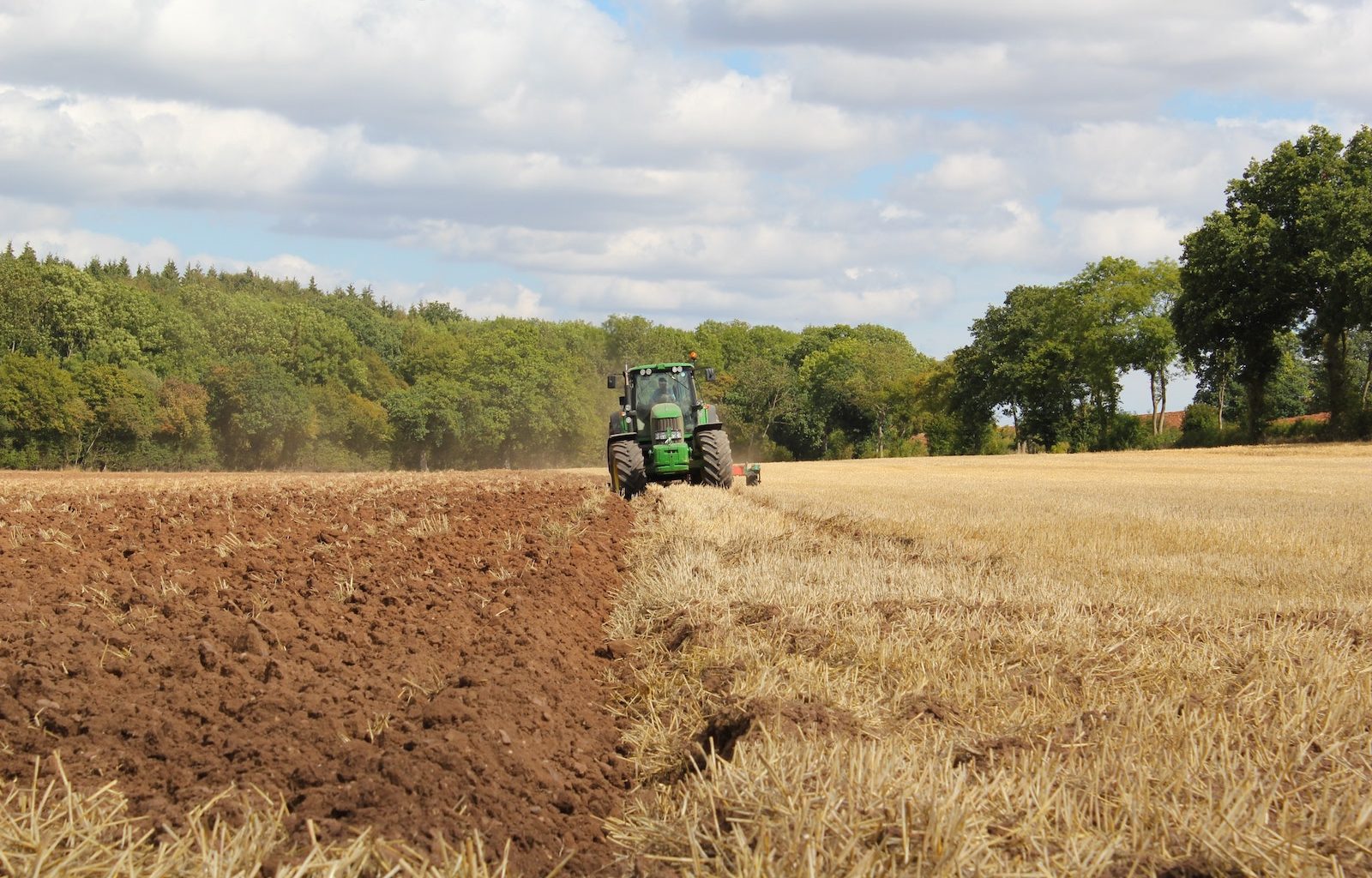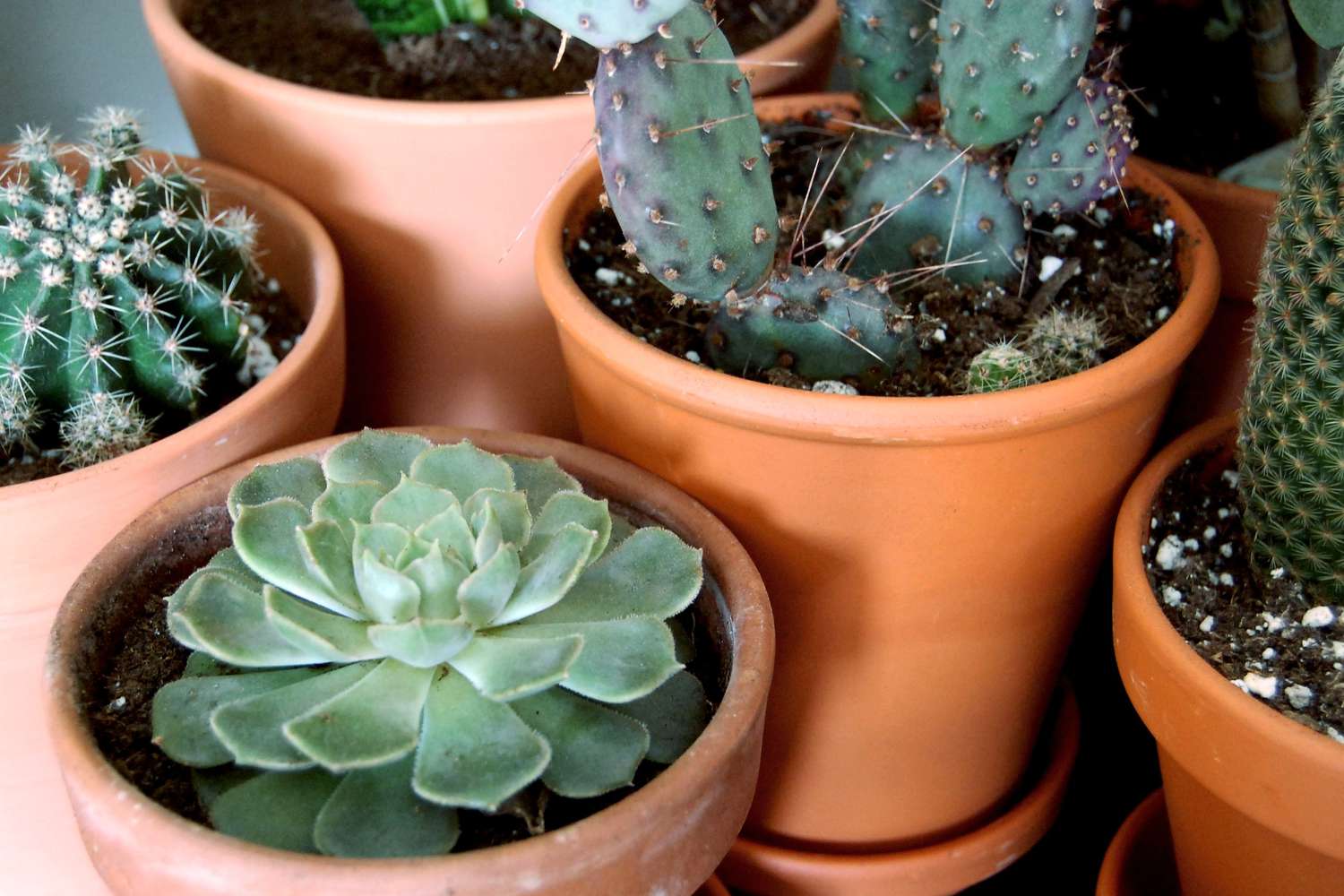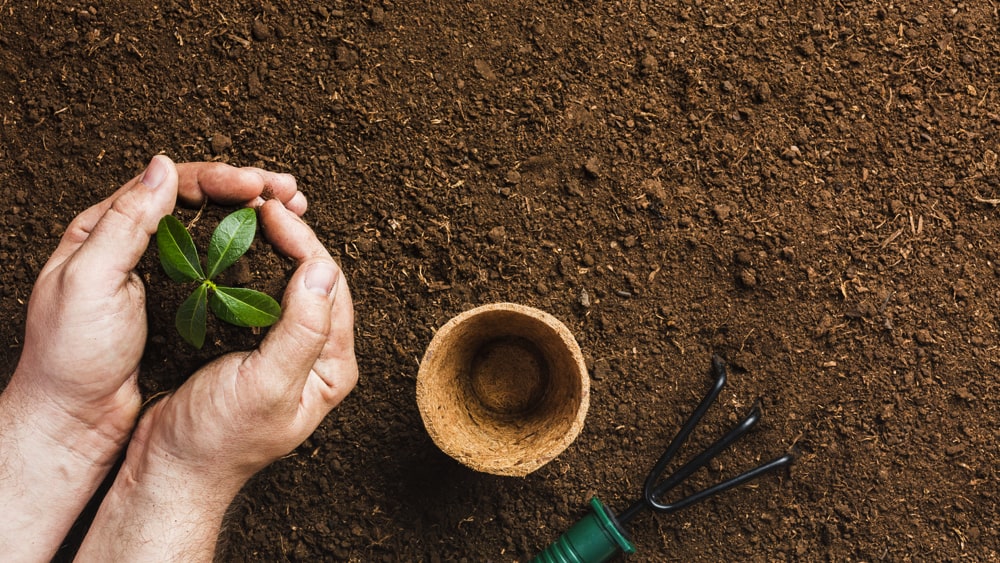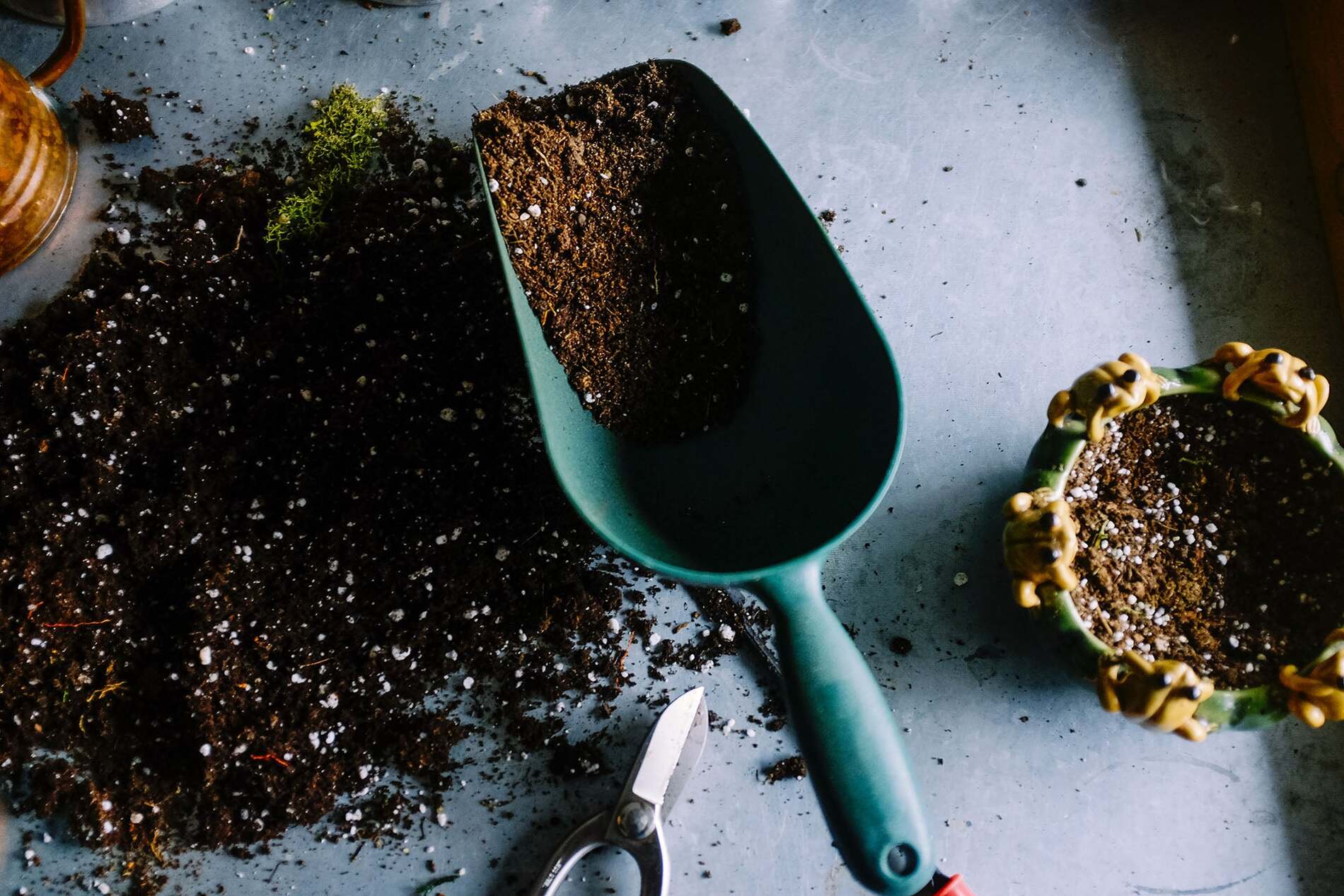Home>Gardening Tips and Tricks>Eco-Friendly Gardening>What Is The Difference Between Hydroponics And Aeroponics
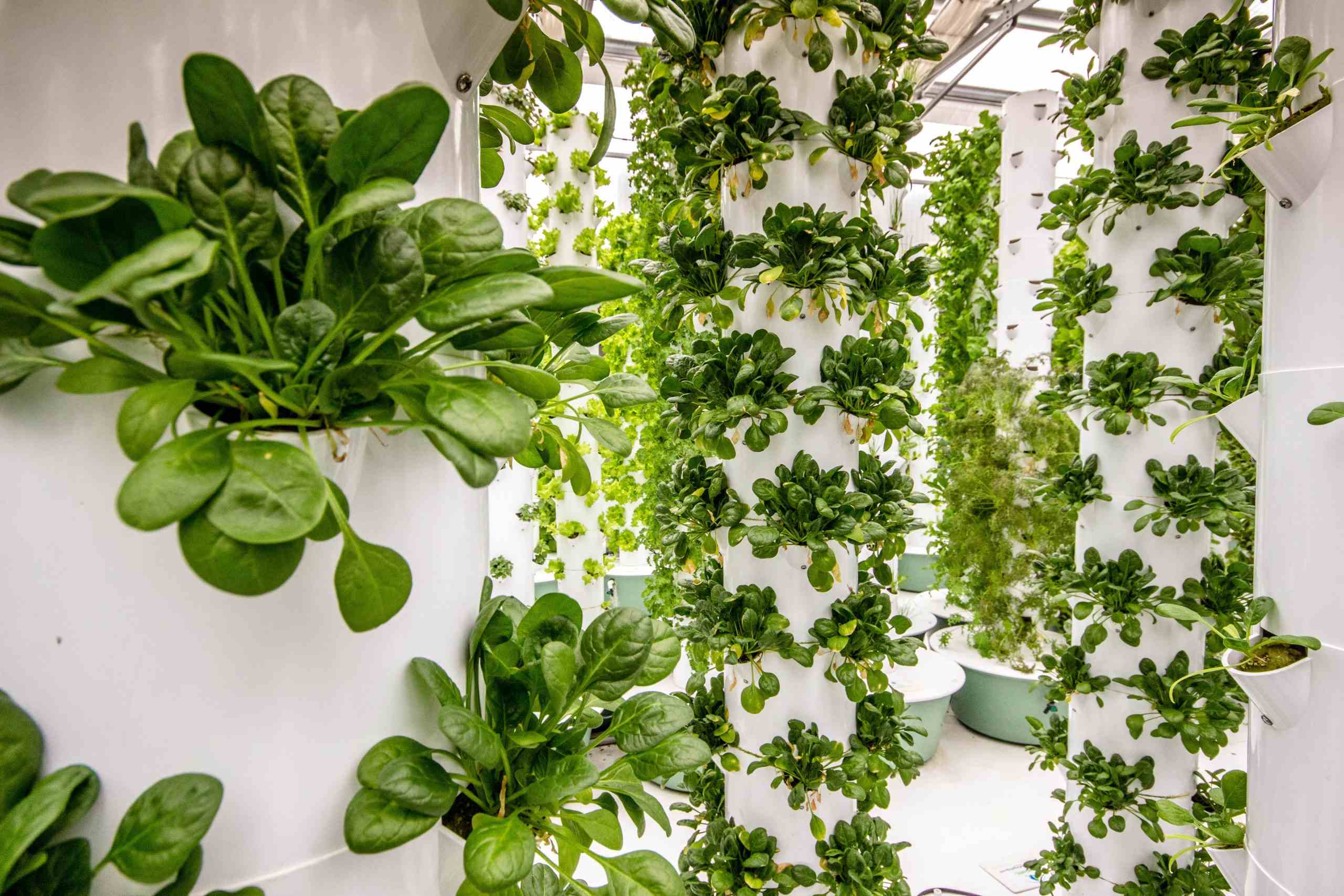

Eco-Friendly Gardening
What Is The Difference Between Hydroponics And Aeroponics
Modified: January 22, 2024
Discover the distinction between hydroponics and aeroponics in eco-friendly gardening. Enhance your knowledge and adopt sustainable gardening practices.
(Many of the links in this article redirect to a specific reviewed product. Your purchase of these products through affiliate links helps to generate commission for Chicagolandgardening.com, at no extra cost. Learn more)
Table of Contents
Introduction
Eco-friendly gardening is becoming increasingly popular as more people seek sustainable and environmentally conscious ways to grow plants. Traditional gardening methods often involve the use of harmful chemicals and excessive water consumption. However, there are alternative gardening techniques that minimize environmental impact and promote the use of natural resources. Two such methods are hydroponics and aeroponics, which provide innovative solutions for growing plants without soil.
Hydroponics and aeroponics are both soilless cultivation methods that offer several advantages over traditional gardening. By eliminating soil as the primary medium for plant growth, these techniques allow for precise control over nutrient delivery, water usage, and plant exposure to oxygen. Furthermore, they can be implemented in various settings, ranging from small indoor systems to large-scale commercial operations.
While hydroponics and aeroponics share similarities, they also have distinct differences in their methodology, nutrient delivery systems, water usage, growth medium, root exposure to oxygen, maintenance requirements, and crop yield. Understanding these differences is crucial for determining which method suits specific gardening needs.
In this article, we will delve into the differences between hydroponics and aeroponics, exploring their unique features and benefits. By gaining insight into these methods, you can make informed decisions about the eco-friendly gardening technique that aligns with your goals and preferences.
Hydroponics: Definition and Methodology
Hydroponics is a soilless cultivation method that involves growing plants in a nutrient-rich water solution instead of traditional soil. This technique allows plants to absorb essential nutrients more efficiently, resulting in faster growth and higher yields.
In hydroponics, plants are typically supported by an inert growth medium such as perlite, coconut coir, or expanded clay pellets. These materials provide physical support to the roots and allow for proper drainage while retaining enough moisture for the plants. The nutrient solution, comprising a carefully balanced blend of essential minerals and elements, is delivered directly to the plant roots via various systems like drip irrigation, ebb and flow, or nutrient film technique.
One significant advantage of hydroponics is the precise control it provides over nutrient delivery. By tailoring the nutrient solution to the specific needs of the plants, growers can optimize their growth and ensure they receive the necessary elements for healthy development. This targeted approach minimizes waste and reduces the risk of nutrient deficiencies or excesses.
Hydroponics also offers advantages in water usage. Compared to traditional soil-based gardening, hydroponic systems use considerably less water. The recirculating systems allow for water recycling, reducing water consumption and minimizing the strain on local water resources.
In terms of maintenance, hydroponic systems require regular monitoring of nutrient levels, pH balance, and water quality. Adjustments may need to be made to maintain optimal conditions for plant growth. Additionally, it is essential to check for any signs of disease or pest infestations to prevent their spread within the system.
Hydroponics is suitable for a wide range of plant types, including vegetables, herbs, flowers, and even fruit trees. Growers appreciate the ability to grow crops year-round, independent of seasonal constraints. With the controlled environment, hydroponics offers opportunities for urban farming and efficient use of space, making it ideal for small-scale home gardens or large commercial operations.
In the next section, we will explore the definition and methodology of aeroponics, another soilless gardening technique that differs from hydroponics in several key aspects.
Aeroponics: Definition and Methodology
Aeroponics is a cutting-edge soilless cultivation method that takes the concept of hydroponics to the next level. In this technique, plants are grown in an environment where their roots are suspended in air, allowing for increased exposure to oxygen. Unlike hydroponics, which uses a growth medium to support the plant roots, aeroponics relies on mist or fog to provide the necessary moisture and nutrients.
In aeroponics, plants are typically placed in a chamber or container where their roots are exposed to periodic misting or fogging. The nutrient solution is atomized into fine droplets and sprayed directly onto the roots, promoting efficient absorption. The root zone remains constantly moist while being exposed to ample oxygen, facilitating optimal oxygenation and nutrient uptake.
One of the main advantages of aeroponics is its ability to provide a higher oxygen level to the roots compared to other cultivation methods. This increased oxygenation promotes faster growth and encourages the development of healthier and more robust plants.
Like hydroponics, aeroponics allows for precise control over nutrient delivery. The nutrient solution used in aeroponics is carefully balanced to provide the necessary elements for plant growth and development. This precise delivery system minimizes waste and ensures that plants receive the optimal nutrients they require.
Water usage is another significant advantage of aeroponics. The misting or fogging system used in aeroponics requires a minimal amount of water compared to traditional gardening methods. The fine droplets of the nutrient solution are efficiently used by the plants, reducing water consumption significantly. Additionally, aeroponic systems often utilize closed-loop systems, allowing for water recycling and further enhancing water efficiency.
Maintenance of aeroponic systems involves regular monitoring of the nutrient solution, pH levels, and misting/fogging systems. It is vital to maintain proper functioning of the misters or foggers to ensure consistent delivery to the root zone. Regular checks for any clogs or blockages are necessary to prevent interruptions in nutrient delivery.
Aeroponics offers great versatility in terms of the types of plants that can be grown. It is particularly suitable for plants with delicate roots, such as orchids or certain herbs. The controlled environment of aeroponic systems allows for year-round growth, making it ideal for indoor gardening or urban farming.
Now that we have explored the definition and methodology of aeroponics, let us proceed to discuss the differences between hydroponics and aeroponics in more detail.
Differences between Hydroponics and Aeroponics
While hydroponics and aeroponics are both soilless gardening methods that offer numerous benefits, they differ in several key aspects, including their nutrient delivery systems, water usage, growth medium, root exposure to oxygen, maintenance requirements, and crop yield.
One of the significant differences lies in the nutrient delivery system. In hydroponics, the nutrient solution is delivered directly to the roots through a medium, such as perlite or coconut coir, which retains moisture and provides physical support. In contrast, aeroponics relies on mist or fog to deliver the nutrient solution directly to the plant roots suspended in the air. This method maximizes oxygen exposure and facilitates optimal nutrient absorption.
Another distinction between hydroponics and aeroponics is water usage. Hydroponic systems use water efficiently, but aeroponics takes water conservation to another level. The misting or fogging system used in aeroponics requires minimal water, as the fine droplets are efficiently used by the plants and can be recycled within closed-loop systems. This makes aeroponics highly water-efficient and environmentally friendly.
Hydroponics and aeroponics also differ in terms of the growth medium used. Hydroponics relies on inert materials like perlite or coconut coir to provide physical support to the plant roots. In contrast, aeroponics does not require a growth medium as the roots are suspended in air. This results in a clean and lightweight system, reducing the risk of disease and making it easier to inspect and maintain the roots.
The root exposure to oxygen is another aspect that sets hydroponics and aeroponics apart. In hydroponics, the roots are constantly submerged in nutrient solution, which limits the oxygen availability. While oxygen is present in the water, it may not reach the roots as efficiently as in aeroponics. With aeroponics, the roots are continuously exposed to oxygen-rich air, promoting faster growth and healthier plants.
Maintenance requirements also vary between hydroponics and aeroponics. Hydroponic systems require regular monitoring of nutrient levels, pH balance, and water quality. Adjustments may need to be made to maintain optimal conditions. In aeroponics, besides these considerations, it is crucial to ensure the misting or fogging systems are working correctly to provide consistent delivery of nutrients to the roots.
Finally, crop yield and growth rate can differ between the two methods. In general, aeroponics tends to offer faster growth rates and higher crop yields compared to hydroponics. The combination of increased oxygen availability and precise nutrient delivery in aeroponics contributes to vigorous plant growth and robust harvests.
These differences between hydroponics and aeroponics highlight the unique characteristics of each method. By understanding these distinctions, growers can select the approach that best suits their needs and objectives. Whether it’s water efficiency, ease of maintenance, or maximizing crop yield, hydroponics and aeroponics offer versatile options for eco-friendly gardening.
Nutrient Delivery System
The nutrient delivery system is a crucial component of both hydroponics and aeroponics, as it ensures that plants receive the essential nutrients they need for healthy growth. However, there are differences in how these systems deliver nutrients to the plants.
In hydroponics, the nutrient solution is delivered directly to the plant roots through various methods such as drip irrigation, ebb and flow, or nutrient film technique. The solution contains a carefully balanced blend of essential minerals and elements that are dissolved in water. The roots are immersed in or come into direct contact with the nutrient solution, allowing for efficient absorption.
The precise control offered by hydroponic systems allows growers to fine-tune the nutrient solution based on the specific needs of the plants. This tailored approach maximizes nutrient uptake and minimizes waste. Nutrient deficiencies or excesses can be quickly detected and addressed through adjustments to the nutrient solution composition.
In contrast, aeroponics delivers the nutrient solution as a mist or fog, which is sprayed directly onto the plant roots suspended in the air. The mist consists of tiny droplets that surround the roots, providing the essential nutrients they require. The fine particles in the mist allow for efficient nutrient absorption through the root surfaces.
Aeroponic systems often use atomizers or foggers to generate the mist or fog. These devices ensure that the nutrient solution is evenly distributed to all the plant roots. However, it is crucial to maintain proper functioning of the misting or fogging system to avoid any blockages or uneven distribution, as this could affect nutrient delivery.
Both hydroponics and aeroponics offer precise control over nutrient delivery, allowing for optimized plant growth and development. The efficient nutrient uptake in these systems promotes healthy root development, vigorous growth, and increased crop yields.
It is important to regularly monitor and maintain the nutrient delivery system in both hydroponics and aeroponics to ensure optimal nutrient uptake by the plants. Regular checks for clogs, blockages, or malfunctions are necessary to prevent interruptions in nutrient delivery that could negatively impact plant health and yield.
The nutrient delivery system is a critical component of soilless gardening, and understanding the differences between hydroponics and aeroponics in how they deliver nutrients can help growers choose the method that best aligns with their gardening goals.
Water Usage
Water usage is a significant consideration in gardening, particularly in regions where water scarcity is a concern. Both hydroponics and aeroponics offer more water-efficient alternatives to traditional soil-based gardening methods.
In hydroponics, water usage is significantly reduced compared to traditional gardening practices. The use of recirculating systems allows for the recycling and reuse of water. Nutrient-rich water that is not absorbed by the plants is collected and circulated back into the system, minimizing water wastage. This closed-loop system in hydroponics conserves water and reduces the strain on local water resources.
Aeroponics takes water conservation to the next level. The misting or fogging system used in aeroponic systems requires only a minimal amount of water compared to other gardening methods. The fine droplets of the nutrient solution are efficiently utilized by the plant roots, resulting in minimal water loss through evaporation or runoff. Additionally, aeroponic systems often incorporate closed-loop systems, further enhancing water efficiency by recycling and reusing the water in the system.
Compared to traditional soil-based gardening, both hydroponics and aeroponics can reduce water usage by up to 90%. This not only helps conserve water but also makes these methods more sustainable for regions facing water scarcity or where water resources need to be allocated for other purposes.
Furthermore, the efficient use of water in hydroponics and aeroponics minimizes nutrient leaching. In traditional gardening, excess water can wash away nutrients from the soil, leading to waste and pollution. In contrast, the closed-loop systems of hydroponics and aeroponics prevent nutrient runoff, ensuring that the plants receive a consistent supply of nutrients while minimizing environmental impact.
By adopting hydroponics or aeroponics, gardeners can significantly reduce their water consumption while maintaining optimal plant growth and health. These techniques offer sustainable alternatives that help address water scarcity concerns and promote eco-friendly gardening practices.
In the next section, we will discuss the differences in the growth medium used in hydroponics and aeroponics, further highlighting the distinctions between these soilless gardening methods.
Growth Medium
The choice of growth medium is an important consideration in soilless gardening as it provides physical support to the plant roots and retains moisture. Both hydroponics and aeroponics utilize different growth mediums, each with its unique characteristics and benefits.
In hydroponics, various inert materials are commonly used as the growth medium. These materials include perlite, coconut coir, expanded clay pellets (LECA), rockwool, and vermiculite. The role of the growth medium in hydroponics is to provide support for the plants’ roots and help retain moisture while allowing for proper drainage. It also serves as a buffer, maintaining an appropriate balance of air and water around the roots.
The choice of growth medium in hydroponics depends on factors such as the type of plant being grown, the desired moisture retention capacity, and availability. For example, perlite is a lightweight volcanic rock that provides good aeration and drainage, while coconut coir is a renewable and sustainable option that retains moisture well. Expanded clay pellets offer excellent drainage and are reusable, making them ideal for commercial hydroponic systems.
Aeroponics, on the other hand, eliminates the need for a physical growth medium. In this method, the plant roots are suspended in the air, allowing for maximum exposure to oxygen. Without a growth medium, there is no risk of diseases or pests harboring within the medium, making aeroponics a clean and efficient gardening technique. The absence of a growth medium also allows for easier inspection and maintenance of the roots.
The elimination of a growth medium in aeroponics offers certain advantages in terms of nutrient and water delivery. With no medium to compete for resources, the nutrient solution can be delivered directly to the roots through mist or fog, ensuring that the plants receive the optimal nutrients and moisture they require for rapid and healthy growth.
The choice between hydroponics and aeroponics with regards to the growth medium depends on various factors, such as the type of plants being cultivated, the specific needs of the plants, and personal preferences. Hydroponics can provide more options in terms of growth mediums, allowing growers to select the medium that best suits the requirements of their plants. Aeroponics, on the other hand, offers a clean and lightweight system that eliminates the need for a growth medium altogether.
Now that we have explored the differences in growth medium, let’s move on to discussing the next distinction – the exposure of plant roots to oxygen in hydroponics and aeroponics.
Root Exposure to Oxygen
The exposure of plant roots to oxygen is a critical factor in soilless gardening methods as it directly influences root health and overall plant growth. Both hydroponics and aeroponics differ in how they facilitate the supply of oxygen to plant roots.
In hydroponics, the roots are typically submerged in the nutrient solution, which limits their access to oxygen. Although oxygen is present in the water, it may not reach the roots as efficiently as in other methods. This can potentially restrict oxygen availability to the roots, leading to slower growth and reduced nutrient absorption.
On the other hand, aeroponics excels in providing ample oxygen to the plant roots. In this method, the roots are suspended in air, allowing direct exposure to oxygen-rich environments. The mist or fog used in aeroponic systems provides a moist environment around the roots while allowing constant access to oxygen. This increased oxygenation stimulates root development, enhances nutrient uptake, and promotes rapid and robust plant growth.
The enhanced oxygenation in aeroponics has several benefits. Increased root exposure to oxygen facilitates better nutrient absorption, leading to more efficient nutrient delivery to the plants. Additionally, the constant supply of oxygen promotes the development of healthy and strong roots, which are essential for overall plant health and vitality.
In hydroponics, while the roots may not have direct access to oxygen, certain strategies can be implemented to enhance oxygen availability. For example, the use of air stones or diffusers can introduce bubbles of oxygen into the nutrient solution, improving oxygenation. Oxygenation can also be enhanced by periodically aerating the nutrient solution through systems such as ebb and flow or nutrient film technique.
Overall, while hydroponics can provide adequate oxygen levels for plant growth, aeroponics offers a significant advantage in terms of maximizing root exposure to oxygen. This higher level of oxygenation leads to faster growth rates, healthier plants, and ultimately, increased crop yields.
The exposure of roots to oxygen is an important consideration for growers when deciding between hydroponics and aeroponics. If maximizing oxygen availability is a priority, aeroponics may be the preferred choice. However, with proper aeration techniques, hydroponics can still provide favorable oxygenation levels for successful plant growth.
In the next section, we will discuss the maintenance and monitoring requirements of hydroponics and aeroponics, highlighting the differences and challenges associated with each method.
Maintenance and Monitoring
The maintenance and monitoring requirements of hydroponics and aeroponics play a crucial role in ensuring the health and success of the plants. Although both methods are soilless and offer controlled environments, there are differences in the maintenance and monitoring processes.
Hydroponic systems require regular maintenance and monitoring to maintain optimal conditions for plant growth. One of the primary maintenance tasks is monitoring nutrient levels in the solution. It is essential to regularly measure and adjust the nutrient solution to provide the right balance of essential minerals and elements for the plants.
In addition to nutrient levels, pH balance also requires close attention in hydroponics. Monitoring and adjusting the pH of the nutrient solution are necessary to ensure that the plants can effectively absorb the nutrients. Regular testing and adjustment of pH levels are vital to prevent nutrient imbalances and optimize plant growth.
Water quality is another aspect that needs to be monitored in hydroponics. Ensuring that the water used in the system is free from contaminants and pathogens is crucial to prevent disease or plant health issues. Regularly checking and maintaining the water quality can help avoid potential problems and ensure the overall success of the crops.
Furthermore, maintaining proper drainage and aeration in hydroponic systems is essential. Over time, the growth medium can become compacted or clogged, hindering water flow and air circulation. Regular checks and maintenance of the growing medium, along with the irrigation system, can help prevent any blockages or issues that can affect plant growth.
In aeroponics, maintenance and monitoring focus more on the misting or fogging system that delivers the nutrient solution. It is crucial to regularly inspect and clean the misting or fogging devices to ensure proper functioning. Any clogs or blockages can disrupt nutrient delivery and affect plant health.
Monitoring the misting system is essential in aeroponics to ensure consistent delivery of the nutrient solution to the roots. Regular checks should be performed to verify that all plants receive equal misting or fogging. Adjustments or repairs may be necessary to maintain uniform nutrient delivery.
Both hydroponics and aeroponics require ongoing monitoring for signs of diseases or pest infestations. Regular observation of the plants is necessary to detect any early warning signs and take appropriate actions to prevent the spread or damage caused by pests or diseases. Maintaining a clean and sterile environment is crucial to minimize the risk of disease in both systems.
Proper maintenance and monitoring are key to successful outcomes in both hydroponics and aeroponics. By regularly checking and addressing the specific requirements of each system, growers can ensure optimal growth and minimize the risk of complications that may arise.
In the next section, we will discuss the differences in crop yield and growth rate between hydroponics and aeroponics, highlighting the factors that contribute to their varying productivity.
Crop Yield and Growth Rate
The crop yield and growth rate are essential factors to consider when choosing a soilless gardening method like hydroponics or aeroponics. Both methods offer advantages over traditional soil-based gardening in terms of faster growth and increased yields, but there are differences in how they achieve these outcomes.
Hydroponics, with its precise nutrient delivery and optimized growing conditions, promotes rapid plant growth and development. By tailoring the nutrient solution to meet the specific needs of the plants, hydroponic systems provide an abundant and consistent supply of nutrients, resulting in vigorous growth rates. The controlled environment and optimal growing conditions in hydroponics, such as temperature, pH balance, and nutrient ratios, contribute to high crop yields.
Aeroponics, on the other hand, takes crop yields and growth rates to even greater heights. The increased exposure of plant roots to oxygen in aeroponics enhances nutrient absorption and stimulates rapid growth. This higher level of oxygenation and nutrient availability fuels accelerated plant development, resulting in faster growth rates compared to hydroponics. Aeroponics has been shown to produce crops with more abundant foliage, larger fruits, and significantly higher yields.
The enhanced growth rates and crop yields in both hydroponics and aeroponics can be attributed to the controlled environment, precise nutrient delivery, and optimized growing conditions. By eliminating the challenges associated with soil-based gardening, such as nutrient deficiencies, pests, and diseases, these soilless methods offer an ideal environment for plants to thrive and maximize their potential.
Moreover, both hydroponics and aeroponics allow for year-round gardening, independent of seasonal limitations. This means that growers can achieve consistent, continuous harvests throughout the year, enhancing the overall productivity and yield potential of their crops.
It is important to note that crop yield and growth rate can vary depending on various factors, including plant species, specific growing conditions, quality of the nutrient solution, and the expertise and experience of the grower. However, in general, both hydroponics and aeroponics provide opportunities for higher crop yields and faster growth rates compared to traditional soil-based gardening methods.
By utilizing the advantages of these soilless gardening techniques, growers can achieve impressive harvests and optimize their productivity while reducing the environmental impact associated with conventional gardening practices.
In the final section, we will summarize the key differences and benefits of hydroponics and aeroponics, providing a comprehensive overview of these eco-friendly gardening methods.
Conclusion
Hydroponics and aeroponics are two soilless gardening methods that offer innovative and eco-friendly alternatives to traditional soil-based gardening. These methods provide precise control over nutrient delivery, optimize water usage, and promote faster growth and increased crop yields. While they share similarities, several key differences set them apart.
Hydroponics utilizes a growth medium to support plant roots and delivers a nutrient-rich water solution directly to the roots. It offers versatility in choosing growth mediums and allows for year-round gardening. Hydroponics is suitable for various plant types and provides efficient water usage and nutrient delivery.
Aeroponics, on the other hand, suspends plant roots in air and delivers the nutrient solution as a mist or fog. This method maximizes oxygen exposure, leading to rapid growth rates and higher crop yields. Aeroponics is highly water-efficient and eliminates the need for a growth medium, making it clean and lightweight.
The maintenance and monitoring aspects differ between the two methods. Hydroponics requires regular monitoring of nutrient levels, pH balance, water quality, and maintaining proper drainage and aeration. In aeroponics, maintenance focuses on the misting or fogging system to ensure consistent nutrient delivery and oxygenation to the roots.
Both methods offer advantages in terms of water usage. Hydroponics reduces water consumption compared to traditional gardening practices, while aeroponics takes water efficiency to the next level with minimal water usage and closed-loop systems for water recycling.
The exposure of plant roots to oxygen also varies between hydroponics and aeroponics. Hydroponics limits oxygen availability to roots submerged in the nutrient solution, while aeroponics provides constant exposure to oxygen-rich air, enhancing nutrient absorption and promoting robust plant growth.
Lastly, both hydroponics and aeroponics offer higher crop yields and faster growth rates compared to traditional gardening. Precise nutrient delivery and controlled environments contribute to optimal plant growth and development in both methods.
In conclusion, hydroponics and aeroponics provide eco-friendly and sustainable alternatives to traditional soil-based gardening. The choice between these methods depends on specific gardening goals, preferences, and the resources available. By adopting these soilless gardening techniques, growers can maximize yield potential, conserve water, and cultivate healthy and vibrant plants all year round.

